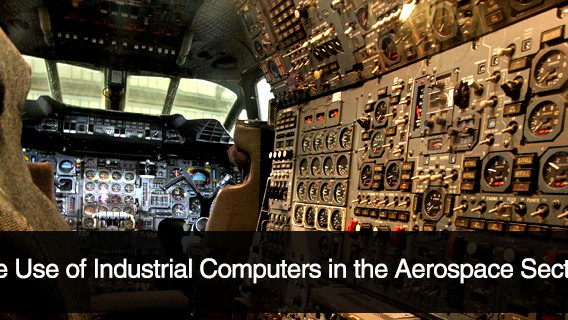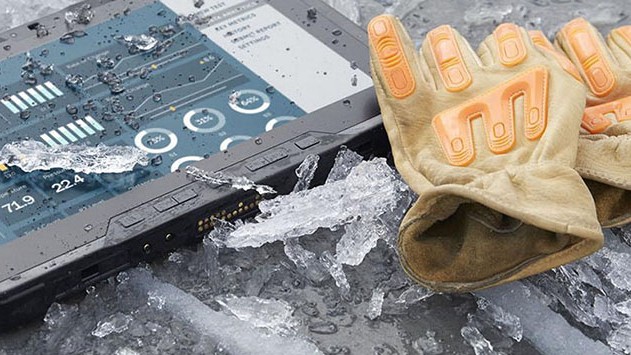The greatest problem with cutting-edge technology is that it only stays cutting edge for a short period of time.
Since any factory, mine, construction, or industrial site is usually filled to the rafters with computers and machines, a question of upgrade becomes a huge financial concern. This isn’t replacing a few laptops for the senior staff: this could be a complete overhauling of the entire operation. Compatibility concerns mean that it won’t be just the computers, panel PCs, or control units that could be replaced, but potentially all of the software and interconnected devices as well.
Now, if all of that sounds like a headache: well, it can be. Which is why it’s so important to best assess when it may be time for upgrade or modernization, whether it’s more prudent to replace a single point of failure instead of the entire system, and how to do it.
Knowing When It’s Time
Article Guide
So, how can you tell when a component is ready for the ‘ole trash pile? And, to expand further, how can you tell when an entire production line or system is ready for a gold watch?
Totaling up the Cost
The easiest way, of course, is to look at what work has been done on an HMI panel or panel mount PC: has the price of repair exceeded the original cost? Or, even worse, is the price of repair adding up to the cost of a new purchase? In the automotive field, we call that “totaled,” and the concept works just as well for industrial computers.
Another way to tell if an industrial computer is in need of replacement: has it slowed down to the point where using it is a massive frustration? Has the efficiency normally gained by a machine become notably degraded, affecting the entire production line or procedure?
Lack of Support
One of the simplest warning signs that it may be time to put an industrial computer or piece of equipment out to pasture is when the original manufacturer or vendor of the machine in question has pulled support for the device. Manufacturers don’t announce the end-of-life for a device lightly: such an announcement means that there is no realistic or feasible way to keep the model running on a large scale, not in the face of aging components, incompatibilities, or just the general degenerative effects of age.
The Dangers of Downtime
Finally, is the machine suffering frequent bouts of downtime? Downtime is perhaps the most egregious and final sign that the current system is ready for replacement: after all, the average cost of downtime for an automotive factory is up to $50,000 per minute, with an average of around $22,000.
To Modernize or Upgrade Your Industrial Computers?
The two major methods of dealing with equipment failure and slowdown are “upgrades” or “modernization.” But what is the difference between the two operations? How do you know when it’s time for either?
What’s the Difference Between Modernizing and Upgrading?
An upgrade is a much smaller, less-expensive solution. In an upgrade, the unit (or units) in question are either improved through hardware upgrades like expanding RAM or the hard drive or more commonly just removed and replaced altogether by new units.
On the other hand, modernization is generally a complete restructuring of the computers, hardware, software, and peripherals all down the line. Instead of just replacing needed parts, its a full rehaul of the technological processes of the factory, construction site, or warehouse to bring it more in line with top-of-the-line strategies and technology.
Knowing When to Upgrade
Upgrading a single unit or line of units is obviously less expensive. A good way to find out if you can solve your production line problems via an upgrade is to look at the system as a whole. Is the problematic unit unique? If there are nine HMI panels of the same make and model from the same year, and only one or two are having problems, while the others are performing admirably with the same amount of upkeep and maintenance, a simple upgrade or replacement should fix the problem.
Another way to look at upgrading is to think of everything beyond the old or failing unit in question. Is the software on the old unit still being updated, patched, and supported? Is that same software still relatively compatible with modern machines? If the answer to either of those questions is “yes,” then a simple upgrade may be in order.
Looking outside of industrial computers and HMI panels, another good time to upgrade instead of modernize is when thinking about improving data, both in volume and granularity. Adding Internet-of-Things sensors to an existing process is considered an upgrade, and should be relatively straightforward and not require an entire ground-up restructuring.
Even if a facility upgrades software that requires more modern computers to run properly, that doesn’t mean you have to modernize all of your machinery. Look for panel PCs or box PCs that can be customized to include legacy ports. If machinery is still running fine, you can get several more years of life out if it simply by customizing modern computer equipment to interface with older machinery.
The Benefits of Modernization
As you no doubt have guessed by now, modernization is far more expensive and requires a great deal more time and planning.
It’s time to commit to modernization when all of the contingencies for an upgrade, listed above, fail you. If multiple computers or hardware platforms across multiple manufacturers are having glitches and/or affecting production, it could point to a systemic problem. Perhaps the lack of original planning/strategy is catching up, or it’s been a long time since the last full system upgrade, or the software that connects everything is going end-of-life and there is no comparable replacement.
Modernization is also a good solution for businesses and industries that are simply looking to make processes faster, to increase productivity, or simply to reduce the cost of production on a large-scale basis. The initial investment may be high, but the injection of cutting-edge technology, more compatibility with modern devices (and thus more access to modern devices and processes), and the generally faster and more efficient processes can pay huge dividends in the long run.
Knowledge is Power: The Benefits of Staying Connected
Perhaps one of the greatest benefits of full modernization is connectivity. Industrial computers, HMI panels, tablets, and all software can now integrate with RFID scanners, barcode scanners, Internet of Things devices, mobile phones, and pretty much every network available to create communication on scales both global or microscopic. Every inch of production can be monitored and controlled with modern industrial computers, all the data harvested and categorized, and all personnel trends and training tracked with laser precision.
On top of that, modern industrial computers and equipment tend to be by far more hardy, using sealed cases, IP65 intrusion protection, and fanless cooling systems to ensure that previously “sensitive” equipment can now endure the inconsistent temperatures and harsh environments of most industrial enterprises.
Advice from the Experts
Whether your computers are just a tad slow or are spending half a day every month crashed and unusable, it’s a good idea to keep your eye on the newest developments in industrial technology.
Knowing when it’s prudent to upgrade a few units or to blow up the whole line and build it from scratch is going to depend greatly on your individual situation. Which is why, if you are unsure or have any questions you’d like answered, you should contact the experts at Cybernet today.
The Use of Industrial Computers in the Aerospace Sector
September 17, 2015
Over recent years, industrial computers have come to take on a critical role in a number of professions. The aerospace industry is one sector that has come to rely on the use of these devices to address a number of…
0 Comments4 Minutes
Why Choose Rugged Tablets over Consumer Tablets
January 12, 2016
As technology continues to play a more integral in the way companies operate, many are now opting to use mobile tablet computers for their business purposes. In fact, According to Quarterly Mobile PC Shipment and…
0 Comments4 Minutes
You Can't
Learn from a Pop-up
But we can deliver knowledge to your inbox!
We dive deep in the industry looking for new trends, technology, news, and updates. We're happy to share them with you.
Knowledge, News, and Industry Updates Right in Your Inbox




